Cable for drain cleaning: types of tools and how to use them correctly
A clog in a sewer pipe is a nuisance that can happen unexpectedly.The drain in an apartment or cottage can become clogged at any time. And it’s not always possible to clean it with household chemicals or a plunger.
Agree, calling plumbers is expensive and time consuming. It’s easier to take a drain cleaning cable and get rid of the problem yourself manually. This tool is easy to use and does not require specialized skills from the home craftsman.
We will tell you how to choose the right simple device and what rules you should follow when cleaning the sewer. We’ll also give an example of how to make a simple cable yourself.
The content of the article:
What is a plumbing cable and why is it needed?
Technical chemical based products And ways There are many options for cleaning sewer pipes. But a plumbing cable (also known as a flexible shaft) is the simplest, cheapest and most effective option among them.
With its help, even old plugs made of garbage or silt deposits can be destroyed in the pipeline. This hand tool can easily clean risers, drains, toilets and other plumbing fixtures.

Nowadays, cast iron sewer pipes in apartments are being replaced by plastic analogues.Thanks to the smooth walls inside, plastic drains clog much less often than old cast iron pipelines. But even in them, blockages still form.
Rags and plastic bags thrown into the toilet turn into a plug in the pipes, which can only be destroyed mechanically.
How to choose the right option
Principle using a plumbing cable extremely simple. First, the tool is pushed into the sewer pipe as far as it will go so that its end touches the blockage.
Then, through rotational and reciprocating movements with the handle of the tool, the tip of this end is used to pick up the plug in order to pull it out or destroy it in place inside the pipeline.
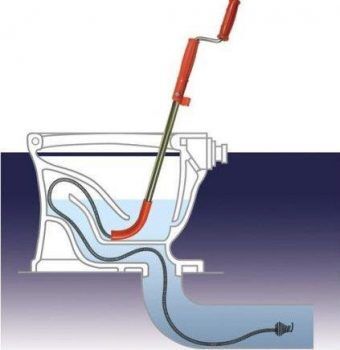
The specifics of application and efficiency of use depend on the design of the cable and the correct choice of tool size.
Taking into account the design features of different models
There are four types of plumbing cables sold in hardware stores:
- cable cars – classic thin rope (rod) made of several wires;
- spring – a hollow spring twisted from wire;
- spring-wound – flexible core with a spiral wound on the outside;
- tape (flat) – tape 1–4 cm wide.
Everyone has types of plumbing cable working elements (handles, nozzles, tapes, wires) are usually made of durable steel.
There are models in which the spiral is covered on the outside with a rubberized shell, which protects the inner walls of the pipes from mechanical damage from metal. But in most cases, a plumbing cable is just a steel spring without any braid.

Cable. A small cable 1.5–3 meters long belongs to the household category of tools. It is ideal for cleaning sinks, clearing toilet blockage and on horizontal sections of pipelines up to the common riser.
Trying to “break through” a plug in the depths of the sewer with it is pointless. Such a plumbing rope will either not reach the blockage, or simply will not be able to destroy it.
Spring. The cable is small in size and ideal for cleaning indoor risers and plumbing fixtures that go to them sewer pipes.
Core cable. This is a professional tool that can be used to push through a weed plug. It is difficult to do something similar with a regular spiral because of its greater softness and compressibility.
Ribbon. Such a tool is not flexible enough and cannot reach all corners of the sewer. It, unlike a spring, bends only in one plane. But the ribbon cable has smaller dimensions when twisted.
Most often it is used when cleaning long main pipes of large diameter, which have an order of magnitude fewer bends than those inside the house.
Determining the optimal working diameter
When purchasing a cable for cleaning sewer pipes, you need to choose its cross-section wisely. It is unlikely that you will be able to clean a sink or urinal with a tool that is too thick. It simply won't fit into the drain hole. This flexible shaft is designed for cleaning risers and wide pipes of large diameter.
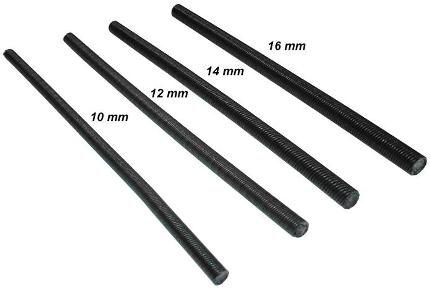
Correspondence of pipe diameters and plumbing cable:
- pipes D<50 mm – the flexible shaft should be selected with a cross-section of up to 10 mm;
- pipelines in 50–110 mm – you need a cable with a diameter of 11–15 mm;
- vertical risers more than 100 mm – you need to choose a tool with a thickness of 16 mm.
A cable that is too thin (3–4 mm) may break when pulling the plug out of the pipe. This device is more intended for cleaning siphons and removing hair from drains.
It’s not worth using it to pierce a thick pipe with a blockage in the form of a rag. A more solid option is required here.
Comparison of hand tools with electric ones
The cable for cleaning sewer pipes has many advantages:
- high torque;
- ideal balance of elasticity and flexibility;
- safety of use;
- simplicity and ease of use;
- high cleaning efficiency;
- Possibility of using attachments for different purposes.
When actively used for its intended purpose, the cable spiral loses its elasticity over time (becomes frayed) and simply breaks. But with proper care, cleaning and oiling after work, this device will last for many years.
A plumbing cable is good for everyone. It's easy to use and cheap. However, this is still a hand tool, which requires a certain amount of effort to operate. But you can modify it a little or purchase a professional electrical appliance.

Professional plumbers prefer to use special tools to make work easier. This can be either a handle on a rigid and stable stand, or a full-fledged power tool with a motor. Plus there are different attachments for different types of clogs.
The manual version of a conventional plumbing cable is cheaper and smaller in size than its electric counterpart. However, the latter greatly simplifies the cleaning of sewer pipes. If you need a tool for one-time work, then there is no reason to spend a lot on it.
However, if you have to constantly clean sewers on a professional basis as a plumber, then you should seriously think about purchasing power tools.
Types of nozzles used
Typically, a plumbing cable for sewerage has a hook at the working end for prying out the garbage plug in the pipe. But a professional tool is instead equipped with a threaded connection for screwing on a wide variety of attachments. They can be included in the flexible shaft kit or sold separately from it.
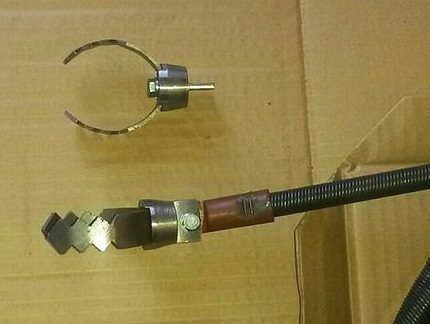
As a replacement nozzle, you can put on the end of a flexible plumbing shaft:
- «screw» – for removing non-solid deposits from pipe walls;
- «hook» – for winding and hooking soft knitwear, etc. of things;
- «scraper» – for use in wide pipes and getting rid of fat deposits;
- «harpoon» – for the possibility of impact on the plug in order to engage and pull it out;
- «sliding knife» – for more thorough cleaning of pipe walls;
- «pike» – for breaking down fat deposits.
There are also spiral, serrated and other knives. Each of them is designed for its own type of blockage. They can even remove roots and dense lime deposits from pipeline systems.
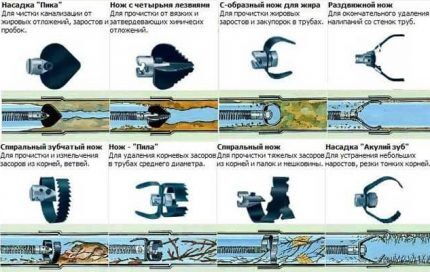
To enhance the capabilities of a conventional flexible shaft without nozzles and connectors for them, experienced plumbers recommend fluffing the end of the cable.
Rigid wires sticking out in different directions, when located in the pipe, will more reliably snag rags and other debris. This will make cleaning easier and faster. But such modernization can only be used in metal pipelines. Plastic walls will quickly be damaged by hard hooks.
The nuances of cleaning pipes with a cable
Before using a metal cable to clear the drain, you should evaluate the nature of the blockage and the degree of blockage. If it is just a rag or a lump of thick cardboard, then a flexible plumbing shaft is an ideal tool for such cleaning.
However, if a technological blockage has formed in the pipe, directly related to the wear of the pipes and their narrowing due to rusting, then only a complete relocation of the sewer system will help.
When inserting it into the sewer, the handle of the plumbing cable should be rotated exclusively clockwise. So the spiral, when it rests on the garbage plug, will begin to gradually compress, increasing the pressure and torque.
If the blockage is complex and large, then the process of pushing the cable, engaging the plug and pulling out the debris will have to be done several times.

If the sewer pipelines are made of plastic, then it is best to take a cable with a rubberized braid for cleaning. It will scrape the plastic walls of the pipes less, inevitably damaging them. This way the sewer system will last much longer.
Before starting work, the spiral should be carefully inspected for possible damage. If it ruptures inside the pipeline during cleaning, it will be difficult to get it out. To remove the piece later, you will need to disassemble the sewer.
When a cable gets stuck in a pipe, you must carefully and slowly begin to rotate it in different directions to free it. You cannot pull the tool. And in general, you shouldn’t put in unnecessary effort when working.
Having broken through the plug in the pipe with a cable, the sewer should then be additionally rinsed with boiling water. It wouldn’t hurt to pour a solution of vinegar and baking soda or another type of fat-dissolving chemical into the drain. Prevention will not hurt here, but will only contribute to the stable operation of the sewage system.
After each use, the flexible shaft must be cleaned of any adhering dirt. In addition to hot water, it is necessary to use cleaning and grease-breaking agents. The cable is stored rolled up after wiping with a dry cloth. It is made of galvanized steel, but you still shouldn’t leave drops of water on it.
The subtleties of making such a tool
Instead of a factory-made product, you can also use a homemade plumber's cable to clean the drain. It is quite possible to make it from scrap materials.
The simplest analogue is a piece of flexible wire with a bent end. However, this device will only clear shallow clogs. Thick wire is not flexible enough to fit too far into a curved pipe.
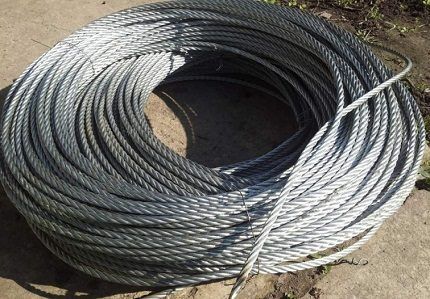
The procedure for making hand tools for mechanical sewer cleaning:
- Cut a piece 1–3 meters long from the metal cable.
- Fluff one end to form a brush.
- Twist the other end into a ring and attach a handle to it for convenience.
- Treat the steel with an anti-corrosion compound.
A do-it-yourself plumbing cable made in this way can be used to clean toilets, bathtubs and sewer pipes.
It is not as versatile as a professional cleaning device, but it is quite suitable for independent use at home.
Conclusions and useful video on the topic
Several interesting videos will help you choose a tool and tell you how to make a cable with your own hands.
Device for cleaning the sewer system without chemicals:
How you can modify the pipe cleaning cable:
Detailed instructions will help you make a homemade cable:
The mechanical method of cleaning sewers is used only as a last resort, when household chemicals and a plunger are no longer able to help..
Working with a plumbing cable is not a pleasant pastime. Specific sewer dirt is difficult to wash off and is extremely aggressive.But if there is a serious blockage, you cannot do without this flexible shaft. And you don’t even need to call a plumber; you can clean a clogged pipe yourself.
Do you have experience dealing with sewer clogs? Please share information with our readers and suggest your way to solve the problem. You can leave comments in the form below.




The cable is one of the things that everyone must have at home. It’s not even that it’s expensive to call experts, it’s just that you can solve this problem yourself much faster. I don’t recommend making the cable yourself, because a situation may arise in which the sewer will have to be cleaned of additional debris. For apartment communications, a five-meter option is quite enough. All these electrical devices have not yet been properly brought to an optimal state, so manually is more effective. It is important not only to push, but also to rotate when entering.
I know from experience in clearing clogged pipes that a cable is the most reliable means. I use it as shown in the first photo. The cable must be thick enough to easily twist and move forward. Thin - it just breaks out of your hands.
A very detailed post, of course, about cables: for the first time I learned that there are attachments for cables (although how can you pull them out with such an attachment if it gets caught on something?) and that you can twist it with a drill (or a screwdriver) - also a controversial option (fastening and unfastening). And, of course, a little off topic, but the best chemical solution for clearing clogs is gel mole. I tried everything else, it doesn't help much.
We tried "Mole" Gel - it helps in some cases. But not always. The most reliable thing is still a regular cable.He can handle any pipe.
Nothing helps. Either my cable can’t go through the turn or the cast iron may already be starting to crumble. In short, I got it.
You don’t have to hit it, you can still try to get by with a little bloodshed. Invite a plumber; there is a method for breaking through the sewer system, such as a pneumatic-hydraulic pulse or using a pneumatic gun. If the problem is a blockage, and not a crumbling pipe, the costs will be much lower than mechanical diagnostics of the system.